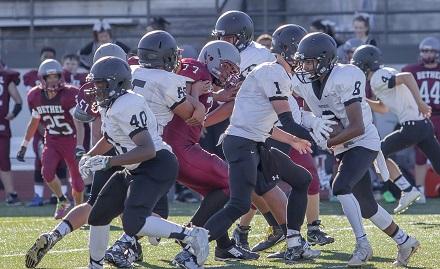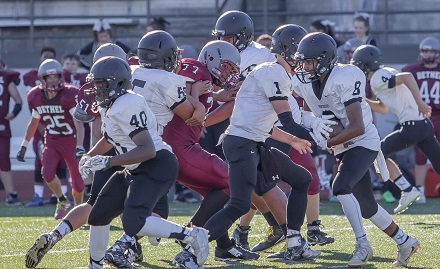

These days, however, with COVID cancelling many high school sports seasons, parents are taking one more step and it’s a big one. They’re packing up and moving their families to states where high schools are allowing teams to play.
Some school systems are encouraging this activity since it means they are able to access rising prospects who attract a great deal of attention. Others? Not so much.
The trend was first reported in The Washington Post, which followed the families of youth football players who moved from states like Colorado, California, Washington, Maryland, New York, Virginia and the District of Columbia – to locations including Florida, Georgia and Iowa, where the rules were more relaxed.
“Families across the country are uprooting themselves so their teenagers — at least two dozen, among those whose decisions have been made public — might be able to gain college exposure or simply play one more season under Friday night lights,” noted the Post.
Other youth fall sports, depending upon the state, generally include soccer, cheer, golf, tennis, cross country and indoor volleyball (although there may be exceptions).
A separate (but related) trend has emerged as well: that of promising high school athletes enrolling in college early and hoping to become involved in winter and spring practices for sports whose championships have been moved from fall to spring.
Want to know which states are hosting sports, which have postponed them and which have cancelled them? A map and notes are available here.
Parents and student athletes have developed a strong cynicism as to when and whether sports will resume – mainly because in the uncharted territory that is the COVID landscape, the goal posts keep moving. Some states have stated they intend to play fall sports in the spring– but have noted this is only a tentative decision and subject to change.
Additionally, parents have noted, coaches for either college programs or elite programs for youth at other levels, may have a full roster by the time spring rolls around, making participation unnecessary and costing young athletes their chance to participate at a higher level.
Not all states feel the same way about transfer students, though, according to the Washington Post. Some states are more amenable to transfers than others — in Florida, public school players are immediately eligible at the school they first attend each year — while others, such as Iowa, have vowed to stand firm in guidelines that require families to make legitimate moves to the state and establish residency.
Additionally, there’s always the chance that after families pull up roots and move across state lines, the schools revisit their decisions to allow fall sports (or any sports at all). The National Federation of State High School Associations is encouraging parents to exercise patience instead of moving, noting they should "consider the bigger picture and remain invested in education-based activities in their school and community."
But it’s not all about sports. In many cases, states with fewer rules regarding social distancing, large gatherings and other COVID-driven measures are simply more attractive to families who have become tired of restrictions. And in-person school itself is a powerful lure, even for non-sports siblings, who want to get back to a normal routine, and to make friends in classes and activities throughout the course of the school year. The idea of having proms and graduations can also be a big carrot.
Those parents who are considering pulling up stakes in order to get their children some field time, however, need to be realistic, say the experts. According to a CBS News report, only about two percent of high school athletes win sports scholarships every year at NCAA colleges and universities. And the average scholarship isn’t that much – about $11,000 – which leaves a lot of money to be made up by parents. There are only six sports where all the scholarships are full ride. These so-called head-count sports are football, men and women's basketball, and women's gymnastics, volleyball and tennis. In these Division I sports, athletes receive a full ride or no ride.
But that hasn’t stopped the optimism; a TD Ameritrade poll showed that 20 percent of sports parents are certain that their child will secure a college athletic scholarship. And somehow, the majority of parents still believe college scholarships will cover more than half of tuition, and one in 10 are optimistic their child will receive a full ride. And beyond that, NCAA has its own painful reality check. Less than two percent of men’s basketball and football players will turn pro, as will less than one percent of women’s basketball players.

